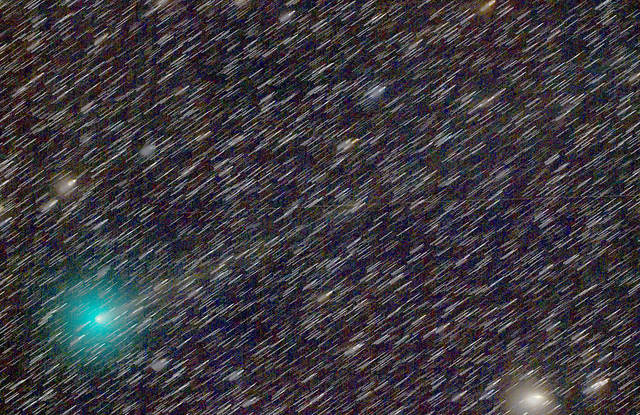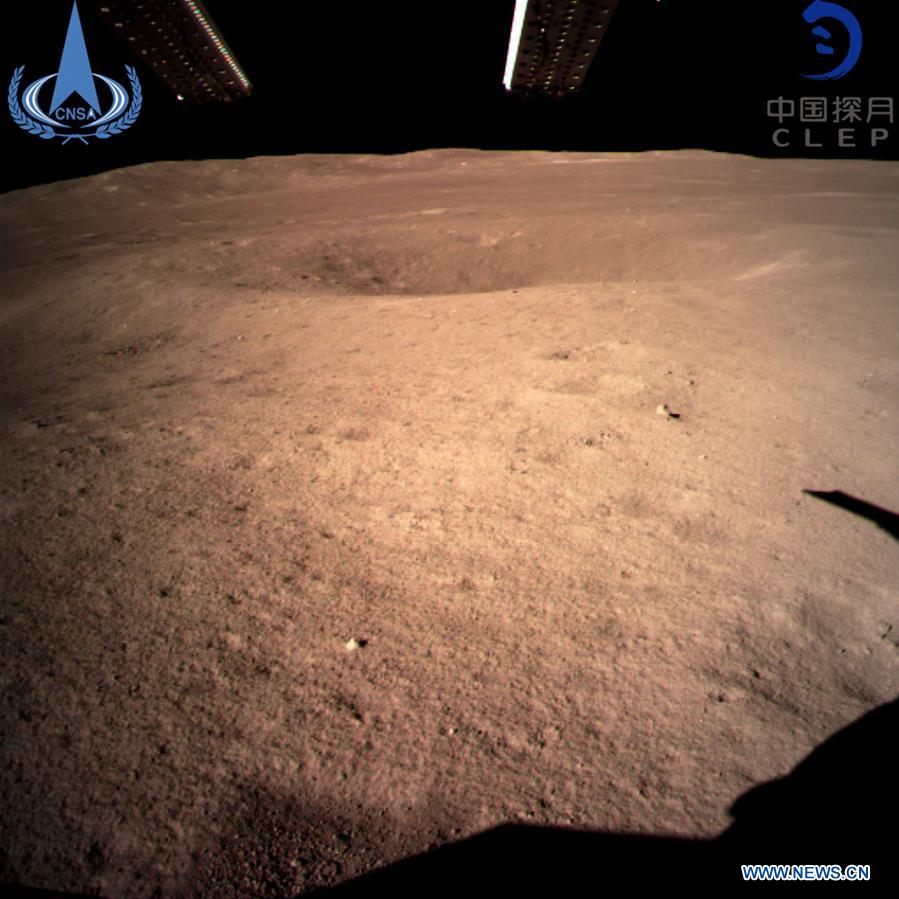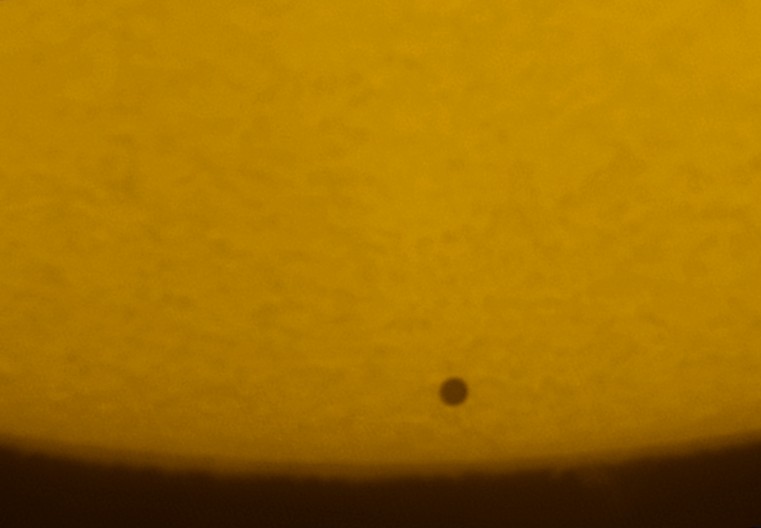Every year produces a handful of binocular comets, and the first one for 2019 is coming right up, with a fine apparition for Comet C/2018 Y1 Iwamoto.
Continue reading “Comet Y1 Iwamoto Tops Out in February”When Does the Sun Rise… Really?
It’s strange but true. We may not fully understand one of the simplest metrics in observational astronomy: just what time does the Sun rise… really?
Continue reading “When Does the Sun Rise… Really?”China’s Chang’e-4 Lands on the Far Side of the Moon
Since the turn of the century, China has worked hard to become one of the fastest-rising powers in space. In 2003, the Chinese National Space Administration (CNSA) began sending their first taikonauts to space with the Shenzou program. This was followed by the deployment of the Tiangong-1 space station in 2011 and the launch of Tiangong-2 in 2016. And in the coming years, China also has its sights set on the Moon.
But before China can conduct crewed lunar missions, they must first explore the surface to locate safe landing spots and resources. This is the purpose behind the Chinese Lunar Exploration Program (aka. the Chang’e program). Named after the Chinese goddess of the moon, this program made history yesterday (Thursday, Jan. 3rd) when the fourth vehicle to bear the name (Chang’e-4) landed on the far side of the Moon.
Continue reading “China’s Chang’e-4 Lands on the Far Side of the Moon”Top Astronomy Events For 2019
You might’ve heard the news. We wrote a book this past year: The Universe Today’s Ultimate Guide to Observing the Cosmos: Everything You Need to Know to Become an Amateur Astronomer. Judging from reader feedback thus far, one of the most popular parts of the book is Chapter 10, where we list the top astronomical events by year for the coming six years. True story… we picked six (2019 to 2024) to stretch out the list to touch on the April 8th, 2024 total solar eclipse. Continue reading “Top Astronomy Events For 2019”
SpaceX to Launch 64 Satellites, Including Orbital Reflector
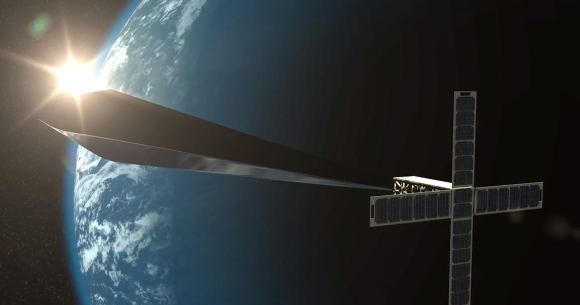
UPDATE – SpaceX has now set a firm date and time for the Spaceflight SSO-A launch from Vandenberg Air Force Base for Monday, December 3nd at 18:31 Universal Time (UT).
A unique smallsat mission promises to be the latest satellite “brighter than a Full Moon!” in the night sky… or not.
The Mission: We’re talking about Orbital Reflector, conceived by Trevor Paglen and fielded by the Nevada Museum of Arts. Dubbed as the “first art exhibit in space,” the $1.3 million dollar project seeks to put a smallsat payload with a deployable reflector in low Earth orbit. Continue reading “SpaceX to Launch 64 Satellites, Including Orbital Reflector”
Heralding the 2018 Harvest Moon
Following the Moon lately? The up and coming Full Moon is the most famous of them all, as we approach the Harvest Moon for 2018. Continue reading “Heralding the 2018 Harvest Moon”
Exploring the Ice Giants: Neptune and Uranus at Opposition for 2018

Have you seen the outer ice giant planets for yourself?
This week is a good time to check the most difficult of the major planets off of your life list, as Neptune reaches opposition for 2018 on Friday, September 7th at at ~18:00 Universal Time (UT)/2:00 PM EDT. And while it may not look like much more than a gray-blue dot at the eyepiece, the outermost ice giant world has a fascinating tale to tell. Continue reading “Exploring the Ice Giants: Neptune and Uranus at Opposition for 2018”
New Saturn Storm Emerging?
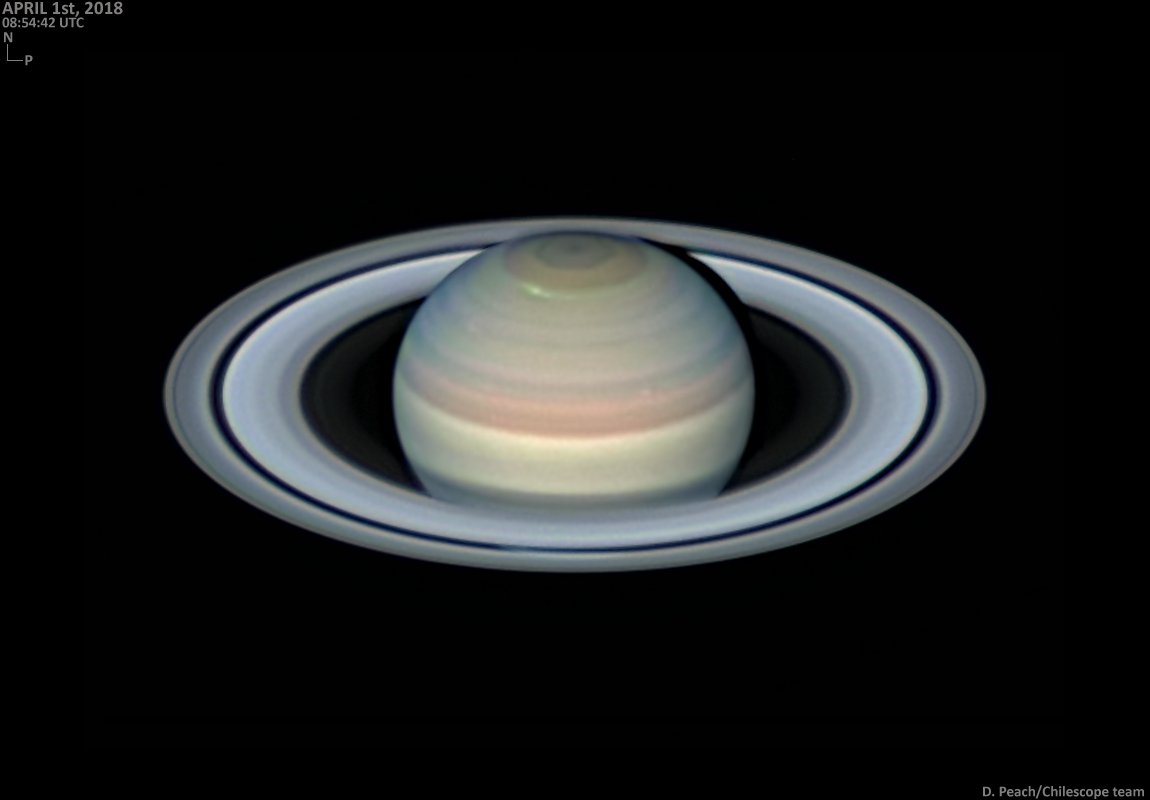
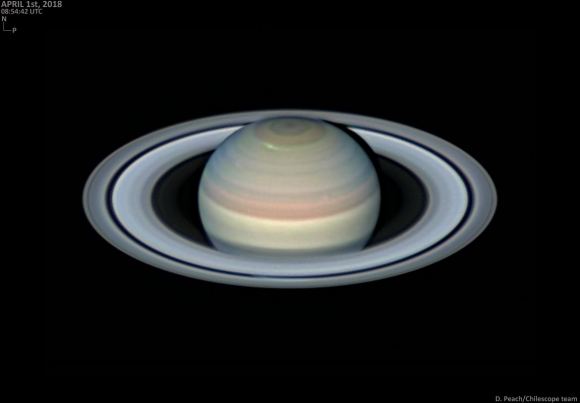
Are you following the planets this season? The planetary action is about to heat up, as Jupiter, Saturn and Mars all head towards fine oppositions over the next few months.
Spying the Storms of Saturn
Astrophotographer Damian Peach raised the alarm on Twitter this past week of a possible bright storm emerging of the planet Saturn. The spot was noticeable even with the naked eye and in the raw video Peach captured, a sure sign that the storm was a biggie.
Though outbursts of clusters of white spots on the surface of Saturn aren’t uncommon, it’s rare to see one emerge at such a high latitude. The storm had faded considerably the next observing session Peach performed on April 5th, though observers should remain vigilant.
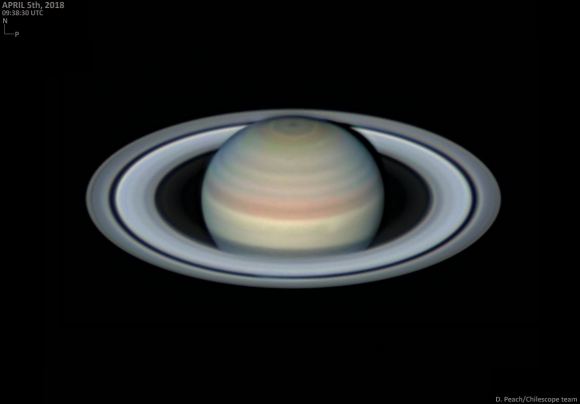
It’s sad to think: Cassini and our eyes in the outer solar system are no more… and the situation will probably remain this way for some years to come. Juno also wraps up its mission at Jupiter (pending extension) this year, and New Horizons visits its final destination Ultima Thule (neé 2014 MU69) on New Year’s Day 2019, though it’ll likely continue to chronicle its journey through the outer realms of the solar system, much like the Voyager 1, 2 and Pioneer 10, 11 missions, also bound to orbit the galaxy, mute testaments to human civilization. But even though proposals for Europa Clipper, a nuclear-powered quad-copter for Saturn’s moon Titan, and a Uranus and/or Neptune Orbiter are all on the drawing board, the “gap decade” of outer solar system exploration will indeed come to pass and soon.
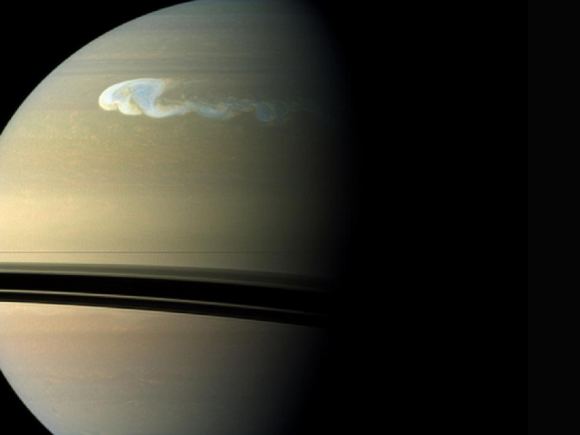
But dedicated amateur astronomers continue to monitor the outer solar system for changes. This month sees Saturn rising around 1:30 AM local and transiting highest to the south for northern hemisphere observers at 6:00 AM local, just before sunrise. Saturn crosses the constellation Sagittarius in 2018, bottoming out at its most southerly point this year for its 29 year path around the Sun. Saturn currently shines at +0.4 magnitude, extending 40” across (including rings) as it heads towards a fine opposition on June 27th. After opposition, Saturn formally crosses into the dusk sky. The amazing rings are an automatic draw, but last week’s storm admonishes us not to forget to check out the saffron-colored disk of Saturn itself as well. For example, I’ve always wondered: why didn’t we see the hexagon before? It’s right there festooning the northern hemisphere cap, plain as day in modern amateur images… to be sure, we’re in a modern renaissance of planetary astrophotography today, what with image stacking and processing, but surely eagle-eyed observers of yore could’ve easily picked this feature out.
And the view is changing as well, as Saturn’s rings reached a maximum tilt in respect to our line of sight of 27 degrees in 2017, and now head back towards edge-on again in 2025. And be sure to check out Saturn’s retinue of moons, half a dozen of which are easily visible in a telescope at even low power.
Finally, here’s another elemental mystery poised by Saturn related to the current storm, one that Cassini sought to solve in its final days: how fast does Saturn rotate, exactly? The usual rough guesstimate quoted is usually around 10.5 hours, but we’ve yet to pin down this fundamental value with any degree of precession.
One thing’s definitely for sure: we need to go back. In the meantime, we can enjoy the early morning views of the most glorious of the planets in our Solar System.
Venus Returns to the Dusk Sky
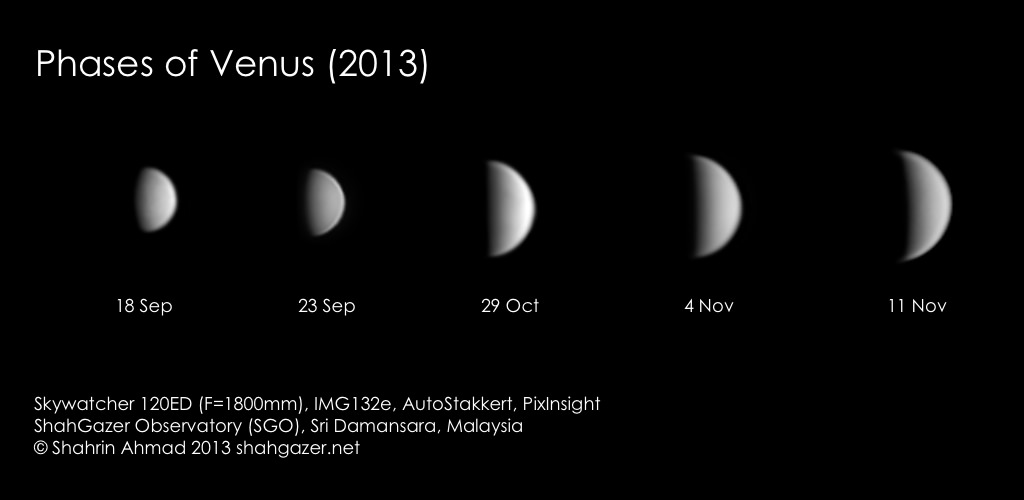
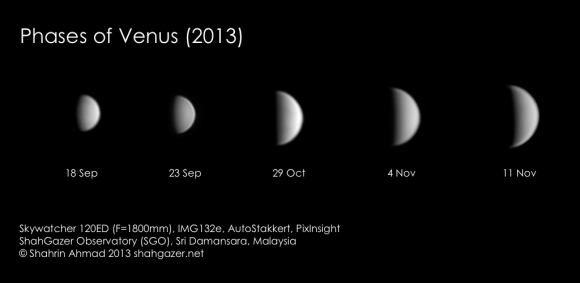
Where have all the planets gone? The end of February 2018 sees the three naked eye outer planets – Mars, Jupiter and Saturn — hiding in the dawn. It takes an extra effort to brave the chill of a February morning, for sure. The good news is, the two inner planets – Mercury and Venus – begin favorable dusk apparitions this week, putting on a fine sunset showing in March.
Venus in 2018: Venus begins the month of March as a -3.9 magnitude, 10” disk emerging from behind the Sun. Venus is already over 12 degrees east of the Sun this week, as it begins its long chase to catch up to the Earth. Venus always emerges from behind the Sun in the dusk, lapping the Earth about eight months later as it passes through inferior conjunction between the Sun and the Earth as it ventures into the dusk sky.
Follow that planet, as Venus reaches greatest elongation at 45.9 degrees east of the Sun on August 17th. Venus occupies the apex of a right triangle on this date, with the Earth at the end of one vertice, and the Sun at the end of the other.
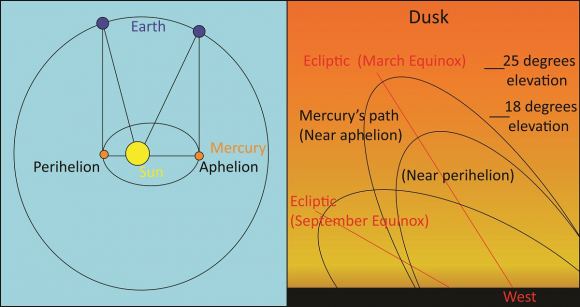
Mercury joins the fray in early March, as the fleeting innermost world races up to meet Venus in the dusk. March 4th is a great date to check Mercury off of your life list, as the -1.2 magnitude planet passes just 66′ – just over a degree, or twice the span of a Full Moon – from Venus. Mercury reaches greatest elongation 18.4 degrees east of the Sun on March 15th.
And the Moon makes three on the evening of March 18th, as Mercury, Venus and the slim waxing crescent Moon form a line nine degrees long.
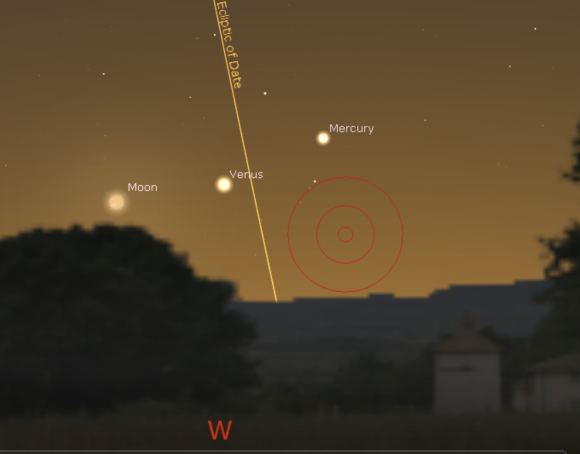
It’s a bit of a cosmic irony: Venus, the closest planet to the Earth, is also eternally shrouded in clouds and appears featureless at the eyepiece. The most notable feature Venus exhibits are its phases, similar to the Moon’s. Things get interesting as Venus reaches half phase near greatest elongation. After that, the disk of Venus swells in size but thins down to a slender crescent. Venus’s orbit is tilted 3.4 degrees relative to the ecliptic, and on some years, you can follow it right through inferior conjunction from the dusk to the dawn sky. Unfortunately, this also means that Venus usually misses transiting the disk of the Sun, as it last did on June 5-6th, 2012, and won’t do again until just under a century from now on December 10-11th, 2117.
Small consolation prize: Mercury, a much more frequent solar transiter, will do so again next year on November 11-12th, 2019.
Amateur astronomers have, however, managed to tease out detail from the Venusian cloudtops using ultraviolet filters. And check out this amazing recent image of Venus courtesy of the Japanese Space Agency’s Akatsuki spacecraft:
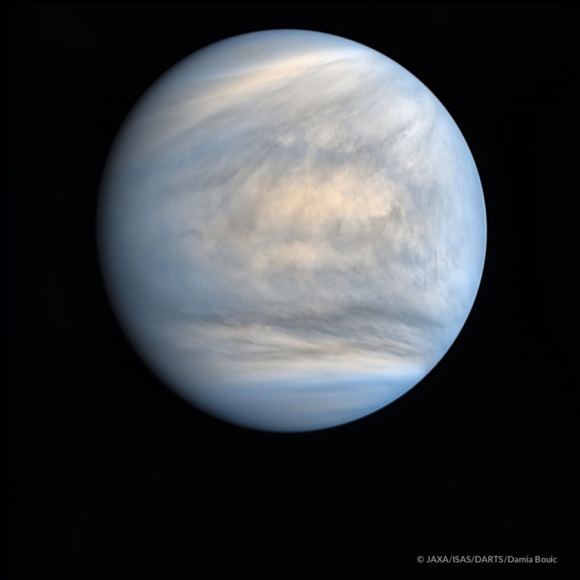
It’s one of our favorite astro-challenges. Can you see Venus in the daytime? Once you’ve seen it, it’s surprisingly easily to spy… the main difficulty is to get your eyes to focus in on it without any other references against a blank sky. The crescent Moon makes a great visual aid in this quest; although the Moon’s reflectivity or albedo is actually much lower than Venus’s, it’s larger apparent size in the sky makes it stand out. Key upcoming dates to see Venus near the Moon around greatest elongation are April 17th, May 17th, June 16th, July 15th, and Aug 14th.
Apparitions of Venus also follow a predictable eight year cycle. This occurs because 13 orbits of Venus very nearly equals eight orbits of the Earth. For example, Venus will resume visiting the Pleiades star cluster during the dusk 2020 apparition, just like it did back before 2012.
Phenomena of Venus
When does Venus appear half illuminated to you? This stage is known as dichotomy, and its actual observed point can often be several days off from its theoretical arrival. Also keep an eye out for the Ashen Light of Venus, a faint illumination of the planet’s night side during crescent phase, similar to the familiar sight seen on the crescent Moon. Unlike the Moon, however, Venus has no nearby body to illuminate its nighttime side… What’s going on here? Is this just the psychological effect of the brain filling in what the eye sees when it looks at the dazzling curve of the crescent Venus, or is it something real? Long reported by observers, a 2014 study suggests that a nascent air-glow or aurora may persist on the broiling night side of Venus.
All thoughts to ponder, as you follow Venus emerging into the dusk sky this March.
Get Set For a “Super Blue Blood Moon Total Lunar Eclipse”
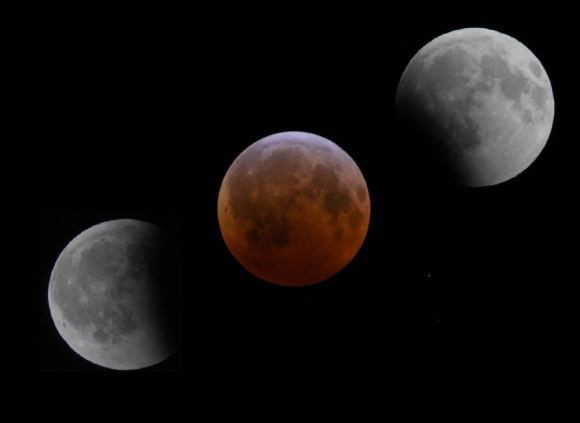
Can you feel the tremor in the Force? Early next Wednesday morning internet astro-memes collide, in one of the big ticket sky events of the year, with a total lunar eclipse dubbed as — get ready — a Super Blue Blood Moon total lunar eclipse.
Specifics on the eclipse: That’s a mouthful, for sure. This is the first eclipse of 2018, and only one of two featuring totality, lunar or solar. Wednesday morning’s eclipse favors the region centered on the Pacific Rim, with regions of Asia and Australia seeing the evening eclipse at moonrise, while most of North America will see totality early Wednesday morning at moonset. Only the regions of the Canadian Maritimes and the United States east of the Mississippi misses out on the spectacle’s climax, catching a partially eclipsed Moon setting in the west at sunrise.
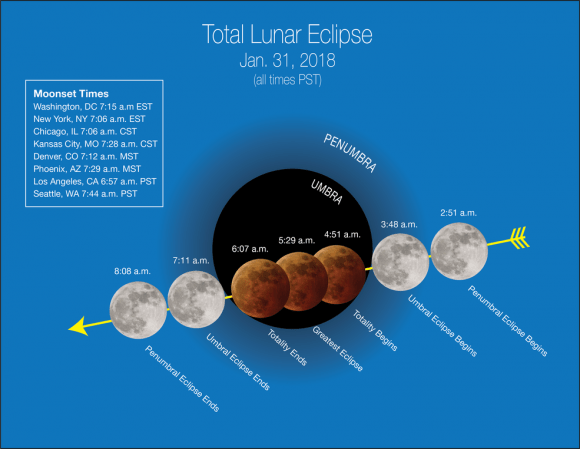
2018 features four eclipses overall, two lunar and two solar. Paired with this eclipse is a partial solar eclipse on February 15th favoring the very southern tip of South America, followed by another total lunar eclipse this summer on July 27th. The final eclipse for 2018 is a partial solar eclipse on August 11th, favoring northern Europe and northeastern Asia.
What’s all the fuss about? Let’s dissect the eclipse, meme by meme:
Why it’s Super: Totality for this eclipse lasts 1 hour, 16 minutes and 4 seconds, the longest since April 15th, 2014. Full Moon (and maximum duration for this eclipse) occurs at 13:30 Universal Time (UT), just 27 hours after the Moon reaches perigee the day prior on January 30th at 9:55 UT . Note that this isn’t quite the closest perigee of the year in space and time: the January 1st Full Moon perigee beat it out for that title by 2,429 km (1509 miles) and 23 hours.
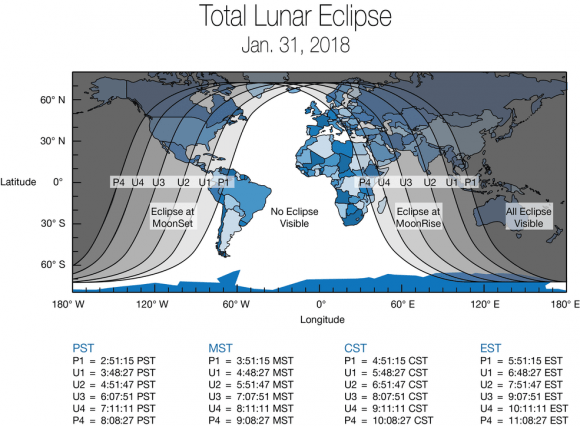
Why it’s Blue: This is the second Full Moon of the month, making this month’s Moon “Blue” in the modern sense of the term. This definition comes down to us thanks to a misinterpretation in the July 1943 issue of Sky & Telescope. The Maine Farmer’s Almanac once used an even more convoluted definition of a Blue Moon as “the third Full Moon in an astronomical season with four,” and legend has it, used blue ink in the almanac printing to denote that extra spurious Moon… anyone have any old Maine Farmer’s Almanacs in the attic to verify the tale?
Note that Blue Moons aren’t all that rare… the month of March 2018 also hosts two Full Moons, while truncated February 2018 contains none, sometimes referred to as a “Black Moon”.
Why All the Blood: The cone of the Earth’s umbra or dark inner shadow isn’t completely devoid of light. Instead, you’re seeing sunlight from all the Earth’s sunrises and sunsets around its limb, filtered into the shadow of the the planet onto the nearside of the Moon. Standing on the Earthward facing side of the Moon, you would witness a solar eclipse as the Earth passed between the Moon and the Sun. Unlike the neat near fit for solar eclipses on the Earth, however, solar eclipses on the Moon can last over an hour, as the Earth appears about three times larger than the disk of the Sun. And although astronauts have witnessed eclipses from space, no human has yet stood on the Moon and witnessed the ring of fire surrounding the Earth during a solar eclipse.
Tales of the Saros: For saros buffs, this eclipse is member 49 of 74 lunar eclipses for lunar saros cycle 124, stretching all the way back to August 17th, 1152. If you caught the total lunar eclipse on January 21st, 2000, you saw the last eclipse in this cycle. Stick around until April 18th, 2144 AD and you can watch the final total lunar eclipse for saros 124.
Unlike total solar eclipses, lunar eclipses are leisurely affairs. The entire penumbral phase of the eclipse lasts for over 5 hours, though you probably won’t notice the subtle shading on the limb of the Moon until its about halfway immersed in the Earth’s penumbral shadow.
Not all total lunar eclipses are the same. Depending on how deep the Moon passes through the Earth’s shadow and the murkiness of the Earth’s atmosphere, the Moon can appear anywhere from a sickly orange, to a deep brick red during totality… for example, the Moon almost disappeared entirely during a total lunar eclipse shortly after the eruption of Mount Pinatubo in the early 1990s!
The color of the Moon during totality is known as its Danjon Number, with 4 being bright with a bluish cast on the outer limb of the Moon, and 0 appearing dark and deep red.
This is also one of the only times you can see that the Earth is indeed round with your own eyes as the curve of the shadow cast by our homeworld falls back across the Moon. This curve is the same, regardless of the angle, and whether the Moon is high above near the zenith, or close to the horizon.
Don’t miss the first eclipse of 2018 and the (deep breath) super blue blood Moon total lunar eclipse!
-Clouded out, or on the wrong side of the planet? Watch the January 31st eclipse live courtesy of the Virtual Telescope Project.

